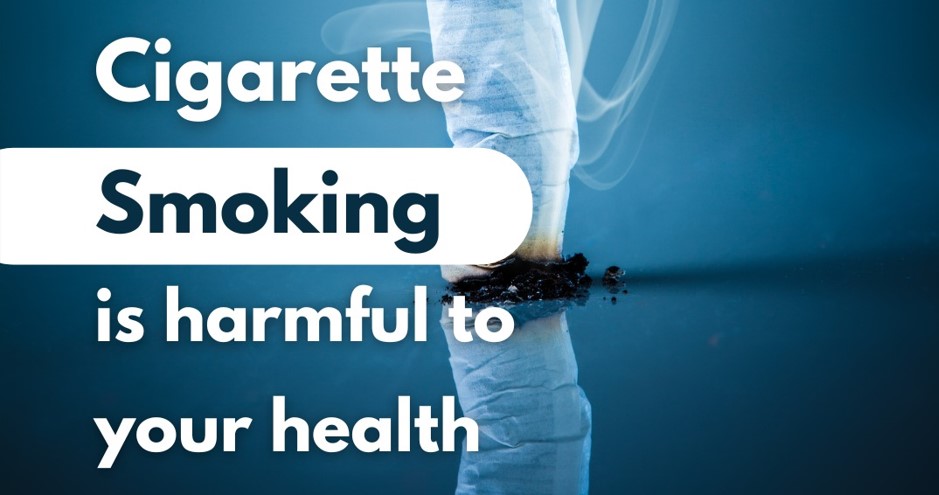Candy-coated killers: How tobacco industry hooks youth with flavours, false glamour

Tobacco harms nearly every organ in the body, causes heart disease, lung conditions, and more than 20 types of cancer.
By Alice Umutesi
When Vestine Mbabazi, a Master's degree student in Kigali, Rwanda, was first introduced to vaping, mid-last year, she was thrilled. The 24-year-old from Nyarugunga Sector in Kicukiro District was excited as “it was something trendy” her friends were doing on a night out.
More To Read
- Mother’s struggle mirrors Kenya’s youth nicotine crisis amid flavoured product surge
- Duale suspends licences for distribution of nicotine products, orders re-application in 21 days
- Over 650,000 Kenyan children aged 10-17 using tobacco or nicotine, Health Ministry warns
- Health Ministry introduces graphic warnings for emerging tobacco products
- Health Ministry calls for strict enforcement of shisha ban amid rising healthcare burden
- Ministry of Health issues warning on nicotine products as health risks rise
According to the Cleveland Clinic, an American nonprofit academic medical centre based in Cleveland, Ohio, vaping is when you use a handheld electronic device to breathe a mist (“vapour”) into your lungs.
An e-cigarette, vape pen or other electronic nicotine delivery system heats a liquid of nicotine, flavouring, propylene glycol and other additives into an aerosol that you inhale through a mouthpiece. Vaping can cause breathing problems, organ damage, addiction and other conditions.
Mbabazi recalled how it all started, saying, “It looked cool and harmless. At first, I hesitated because I wasn’t a smoker. But then one of my friends said, ‘Try it, it’s okay. It’s not like a real cigarette.’ So, I did. I took one puff.”
The moment made her feel confident; she fit in.
“I had never felt so cool. I thought it would stop there,” she said. But it didn’t. One puff turned into a habit.
“I kept going. Eventually, I started vaping at home. I could barely go a few hours without it, even though my parents didn’t know.”
Everything changed when her mother unexpectedly found out.
“Mum was so disappointed. She was mad! I immediately felt terrible because I hadn’t known I was doing anything wrong or harmful,” Mbabazi said.
Shocked
A few days later, as she scrolled through TikTok, Mbabazi came across a video that shocked her.
“It was a teenage girl lying in a hospital bed, talking about how vaping had nearly killed her. That really scared me.”
It was the wake-up call Mbabazi needed.
“I decided to quit. It wasn’t easy, but I pushed through, and I did it. Now, I feel refreshed, and I regret ever starting. I no longer carry the guilt. I just feel healthy and free," she said.
According to Simone St. Claire, a World Health Organisation (WHO) tobacco control expert, the tobacco industry knowingly sells products that kill approximately eight million people globally each year.
The tobacco industry continues to sell death and destruction by using flavours, packaging, and advertising, according to the UN health agency. Is there any “safe” product or consumption method? How does tobacco use harm your body?
These are some of the critical questions the United Nations’ specialised health agency raised ahead of World No Tobacco Day, observed last week.
Products and designs
To “unmask the appeal and expose the truth”, WHO experts exposed how the tobacco and nicotine industries target people of all ages with products and designs tailored to different groups while deliberately preying on youth.
As noted, every day, the tobacco and nicotine industries use carefully engineered products and deceptive tactics to hook a new generation of users and keep existing ones.
St. Claire said, “To sustain their business, they must continuously recruit new users to replace those who die from using their products. And because their products are so harmful, they must do everything they can to make them attractive, especially to young people.”
One of the industry’s most powerful tactics is the use of flavours. “Tobacco on its own is harsh and unappealing. But when you add mint, mango, bubble gum, or vanilla, it suddenly seems less dangerous. Flavours are designed to hook users and keep them addicted. This is not accidental; this is by design,” she added.
Packaging
St. Claire also noted how packaging is used as a marketing tool. Tobacco companies use sleek, minimalist designs and bright colours to make their products look premium or sophisticated.
She added that modern nicotine products like vapes are often designed to resemble USB sticks, lipsticks, or trendy accessories, making them easy for children to hide from adults.
Tobacco harms nearly every organ in the body, causes heart disease, lung conditions, and more than 20 types of cancer.
“It’s a leading risk factor for non-communicable diseases and premature death. Within 20 minutes, your blood pressure and heart rate drop. Within weeks, lung function improves. After a year, your risk of heart disease is cut in half,” she noted, also raising concerns about how the tobacco industry spends tens of billions annually more than some countries' GDP, to promote its products and conceal the deadly risks.
Targetting children
“Placing products near candy in stores isn’t an accident; it’s a deliberate attempt to target children,” she added, urging the public to be vigilant and support life-saving policies.
“Don’t be fooled. If a tobacco or nicotine product looks fun, tasty, or trendy, it’s designed that way to hook you. Spread the word and support policies that protect lives,” she said.
In Rwanda, the prevalence of tobacco smoking dropped from 12.8 per cent in 2012 to 7.1 per cent in 2022, according to the Rwanda Biomedical Centre (RBC). However, all forms of tobacco use among youth aged 15 to 35 remained at 8 per cent.
Dr Evariste Ntaganda, the Director of the Department of Cardiovascular Diseases at RBC, told The New Times that the tobacco industry also attracts consumers by offering price reductions and using targeted advertising strategies, particularly on social media.
He said the tobacco industry aggressively targets lower-income populations and youth, using these tactics to increase sales and maintain market dominance.
“The industry's aggressive marketing strategies contribute to the initiation and continued use of tobacco products, leading to significant negative health and economic repercussions for the country,” he explained, emphasising the need for stronger policy enforcement.
“Enforcing bans on tobacco advertising and promotion, including social media and influencer marketing, can help reduce exposure to these tactics. Strengthening enforcement of age restrictions and regulating online sales can limit access to tobacco products for minors,” he added.
Dr Ntaganda proposed restricting flavoured tobacco products to make them less appealing to youth.
Deadly for non-smokers
Tobacco can also be deadly for non-smokers, according to the WHO. As noted, second-hand smoke exposure has also been implicated in adverse health outcomes, causing 1.2 million deaths annually.
Nearly half of all children breathe air polluted by tobacco smoke, and 65,000 children die each year due to illnesses related to second-hand smoke. Experts say that smoking while pregnant can also lead to several lifelong health conditions for babies.
Dr Jean-Pierre Sibomana, a pulmonologist at King Faisal Hospital-Kigali and Umurinzi Petros Medical Centre, said that tobacco use leads to numerous health problems and a reduction in one’s lifespan.
The youth need to understand the true intentions behind the promotion of tobacco products, Dr Sibomana said.
"Young people should know that these companies just want to sell; they are not giving them something good. Once the youth know that, they can avoid tobacco products because when you start smoking, it becomes very hard to stop. Nicotine builds up in the body, and the more it increases, the harder it becomes to quit. You become addicted."
Dr. Sibomana also debunked a common misconception that smoking makes someone appear stylish or mature.
"Many people, especially the youth, want to look smart and cool, and they think smoking is the way, but that’s not true. You are destroying your life."
Top Stories Today














































